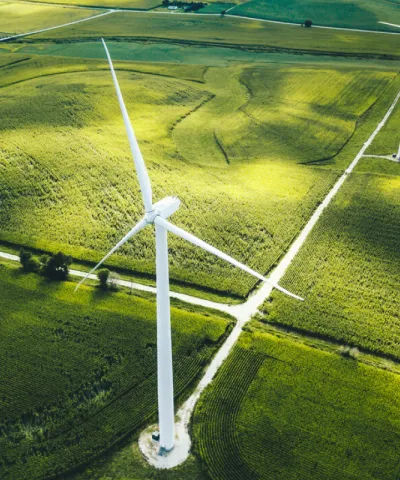For decades, industrial strategy was shaped by the pursuit of efficiency. Lean supply chains, global sourcing, and just-in-time production became synonymous with operational excellence. But in a world shaped by geopolitical shocks, resource volatility, and systemic disruption, that logic is under pressure.
Today, resilience has become a strategic imperative. Industrial companies are shifting to flexible ecosystems designed to absorb disruption and sustain growth. The urgency is clear: the U.S. is preparing a 50% import tariff on copper, signaling how fast policy can reshape critical value chains. Forgoing this means risking operational standstills and long-term competitive losses. The question, thus, is how to implement resilience measures that create real value.
A fragile global order
Today’s environment is defined by multipolar instability. Geopolitical tensions and systemic shocks have exposed the fragility of globally integrated supply chains. Events like the COVID-19 pandemic, maritime blockades, the war in Ukraine, escalating conflict in the Middle East, and rising protectionism have disrupted trade and constrained access to critical inputs.
The results are tangible: energy prices spike unpredictably, raw materials become inaccessible, and inflation distorts cost structures. This dynamic is especially destabilizing for industries that depend heavily on imported raw materials and feedstocks. For example, over 77% of platinum reserves are located in South Africa, while over 98% of the EU’s rare earth magnet demand is met by China. This has created critical chokepoints for downstream sectors.
Optionality over optimization
To adapt to a shifting global order, industrial leaders are moving from cost efficiency toward strategic optionality. This includes targeted measures like flexible logistics/optional supply routes, and diversified sourcing, as well as autarky strategies like circularity. These levers offer more control, fewer dependencies, and greater flexibility. However, they come at a cost: not just in capital, but in reduced benefits of specialization and global division of labor.
Two measures that stand out are nearshoring and circularity.
- Nearshoring brings production closer to demand centers but still depends on resource availability.
- Circularity allows companies to partially reshape that availability, by recovering and reusing materials to reduce dependence on imports.
Nearshoring to reinforce resilience
As global trade patterns evolve, companies are rethinking where they produce and source critical inputs. According to recent data, over 57% of global supply chain leaders are working to regionalize their operations. This shift is visible in trade behavior: in 2019, 61% of EU and U.S. buyers sourced from China; by 2025, that figure had dropped to 42%.
For companies in the chemicals, energy, and materials sectors capital exports have long been a proven strategy to get closer to key markets and customers. Local production secures market access, reduces logistical exposure, and can unlock eligibility for regional policy incentives.
Beyond these operational benefits, regionalization opens up multiple commercial advantages. Proximity to demand centers enables tighter integration with customers, greater responsiveness to regulatory shifts, and in many cases, more pricing flexibility through differentiated service or ESG alignment. For instance, BASF’s USD 10 billion investment in Zhanjiang, China, doesn't just shield against trade barriers, it also positions the company to grow with downstream demand. Similarly, the expansion in France strengthens its presence in the European automotive and industrial ecosystem, while building local resilience.
However, this realignment is not without trade-offs. Regional production often means higher input costs, more complex permitting, infrastructure investment, and greater exposure to local resource risks. It also requires rethinking global asset strategies and balancing between scale efficiency and market relevance.
Circularity: Building feedstock optionality
While nearshoring improves proximity and responsiveness, it does not eliminate upstream supply risk. Circularity, by contrast, tackles this challenge, yet remains significantly underutilized. Despite increasing awareness, global value chains are still largely linear: only around 7% of materials are cycled back into productive use. This creates lasting exposure to volatile raw material markets, fragile extraction geographies, and growing regulatory pressure.
Circularity addresses these risks by reintegrating end-of-life materials into production, reducing dependency on virgin resources. When recovery, processing, and reuse are regionally co-located, companies can build self-reinforcing loops that increase supply security, improve environmental positioning, and unlock commercial upside.
Strategic decisions are already being made. Eastman, for instance, is investing EUR 1 billion in chemical plastics recycling. This is not near traditional fossil feedstock, but at locations where plastic waste accumulates. Umicore is pursuing a similar logic with its advanced metal recycling facility in Belgium, recovering materials from local residues and battery scrap. Both cases reflect a strategic pivot: away from global resource flows, and toward regional loops, that reduce import dependency and enhance supply security. It also creates favorable conditions for pricing power through proximity to customers, reliable delivery, and a portfolio aligned with regulatory and ESG priorities.
Capturing this potential, however, requires commercial discipline. Circular business models must be designed around stable input flows, viable recovery economics, and evolving policy frameworks. Facility design, capital allocation, and pricing strategies must align from the outset.
The key question is not just if circularity reduces risk, but where it creates real margin potential. Which materials support competitive pricing? How does regional recovery reshape customer relationships, or eligibility for incentives?
Circularity offers risk mitigation. At the same time, it creates an opportunity to transform supply chains into competitive assets. Companies that evaluate circular investments through a commercial lens will be best positioned to turn resilience into long-term advantage.
A unified strategy for resilience and value creation
Energy, Security, Geopolitics: this is the new triad shaping industrial investment. In this context, the strategic commitment to regionalize must be carefully evaluated. Companies that get it right can turn location into leverage. They can stabilize supply chains, strengthen market access, and translate proximity into commercial value.
But doing so requires rigorous evaluation of both risks and rewards, from infrastructure readiness to customer impact and from investment logic to monetization potential.
- By localizing production and closing material loops, companies can:
- Secure access to critical inputs and reduce reliance on fragile or concentrated sources
- Mitigate volatility in costs, transport, and availability across core materials and energy
- Strengthen market positioning through reliability, sustainability, and proximity to demand
- Create pricing flexibility and margin potential where supply resilience meets customer value
- Align capital allocation with policy incentives, infrastructure readiness, and regional growth patterns
The winners will be those who translate resilience into measurable performance across cost, customer relevance, and pricing impact. Thus, the challenge for industrial leaders isn’t whether to act, but how to ensure that resilience investments generate real, measurable, and commercial advantage.
That means navigating trade-offs across footprint, material strategy, and customer positioning while ensuring that capital flows to where resilience creates margin uplift and long-term defensibility. Like any other strategic initiative, resilience investments must provide a net benefit to the company. The following questions help clarify where resilience creates real returns and where it doesn’t:
- Where does resilience investment meaningfully reduce risk, and where does it merely shift cost or complexity?
- How should resilience investments be prioritized against other growth levers in your portfolio?
- Which materials are worth regionalizing or closing the loop for, and which should remain globally sourced?
- Which sites or supply loops combine proximity, policy incentives, and infrastructure into real strategic advantage?
- What resilience thresholds will your customers expect, and how soon will that define your license to operate?
- How does your resilience strategy reshape your market positioning, and where can you price that advantage in?
From optionality to competitive advantage: How Simon-Kucher can help
Building autarky, through circular material loops at the demand center is a source of competitive advantage and value creation. For companies in chemicals, energy, and materials sectors, this means aligning investment decisions not only with supply security but with commercial upside.
At Simon-Kucher, we help industrial leaders anchor resilience where it matters most: in market strategy, value creation, and investment prioritization. Whether through nearshoring scenarios, regional site strategy, or circular economy roadmaps, we work with industrials clients to turn optionality into competitive edge, supported by rigorous commercial modeling, demand alignment, and policy context.
To start this transformation, you need to ask: How much uncertainty can your value chain absorb? Where have your localization or circularity initiatives delivered impact? And where are you already building resilience that enables growth? Connect with our experts to take this conversation forward.
Our upcoming Chemicals, Energy & Materials (CEM) Study 2025 will benchmark how executives across North America and Europe are responding to geopolitical shifts, regulatory change, and resource constraints. It will explore where resilience is already paying off, and what separates early movers from those playing catch-up.
In our next article, we’ll explore how digitalization and shifting customer expectations are reshaping B2B value chains: from monetizing green premiums to embedding AI in sales and pricing.
Sign up for early access to our upcoming Chemicals, Energy, & Materials Study 2025.
Form placeholder. This will only show within the editor



